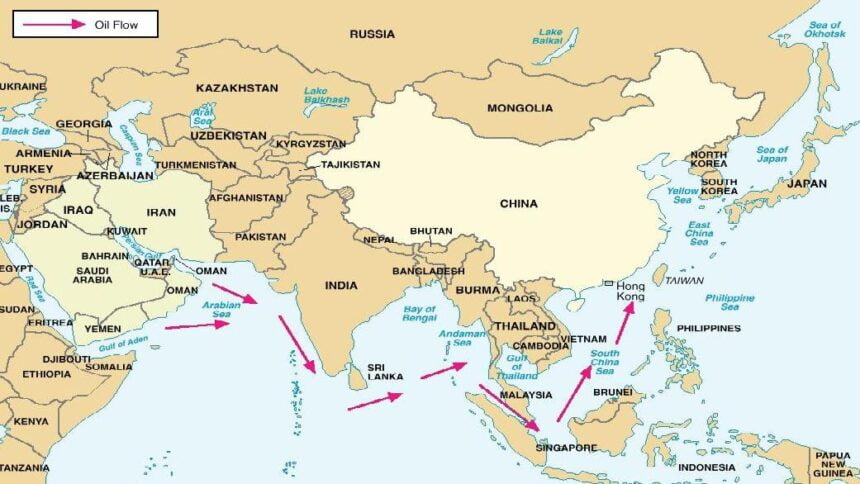China’s ambitious rise on the global stage has been accompanied by intricate geopolitical challenges, one of the most significant being its dependence on the Malacca Strait for trade and energy shipments. As the nation seeks to expand its influence across the world, this narrow passage has become a pivotal crossroads for its global strategic ambitions.
Chokepoint Vulnerability:
The Malacca Strait, a narrow waterway between Malaysia and Indonesia, is one of the world’s most important maritime chokepoints. It serves as a critical trade route, through which a substantial portion of global trade flows, including vital oil shipments from the Middle East to China. However, this strategic dependency is a double-edged sword, leaving China exposed to potential disruptions that could have far-reaching consequences.
Maritime Security Concerns:
The geopolitical realities in the region add complexity to China’s dilemma. The Malacca Strait’s proximity to hotspots like the South China Sea has contributed to maritime disputes and military tensions. China’s assertiveness in the South China Sea has drawn criticism from neighboring nations and has prompted the United States and its allies to enhance their presence and security operations in the area.
Energy Security at Stake:
China’s rapid industrialization and urbanization have fueled its energy demand, making the secure transport of oil and natural gas a vital lifeline. Any disruption in the Malacca Strait would not only disrupt China’s supply chains but could also have ripple effects on global energy markets, leading to increased volatility and potential economic setbacks.
Diversification Efforts:
In response to these vulnerabilities, China has undertaken initiatives to diversify its trade and energy routes. The Belt and Road Initiative (BRI) is a cornerstone of these efforts, aimed at creating alternative trade corridors and reducing dependence on the Malacca Strait. The China-Pakistan Economic Corridor (CPEC) and the development of ports in the Indian Ocean region are part of this grand strategy.
The Indo-Pacific Balancing Act:
China’s diplomatic and economic pursuits in the Indo-Pacific region underscore its efforts to navigate the Malacca Strait dilemma. However, these ambitions intersect with the interests of other regional powers, including India, Japan, Australia, and the United States. The evolving strategic dynamics necessitate careful calculations and proactive diplomacy.
Implications for Global Order:
China’s reliance on the Malacca Strait accentuates the interdependence of nations in an increasingly interconnected world. The vulnerability of a single maritime passage to geopolitical tensions and disruptions underscores the fragility of the global trading system. It reinforces the urgency of fostering open dialogue, collaboration, and international cooperation.
Conclusion:
China’s Malacca Strait dilemma serves as a poignant reminder that global strategic ambitions come with strategic vulnerabilities. As China continues to extend its reach across the world, it must balance its aspirations with proactive measures to ensure the resilience of its trade and energy networks. The challenges posed by the Malacca Strait echo the broader imperative for a rules-based international order and cooperation among nations to safeguard the stability and prosperity of the global maritime domain.






